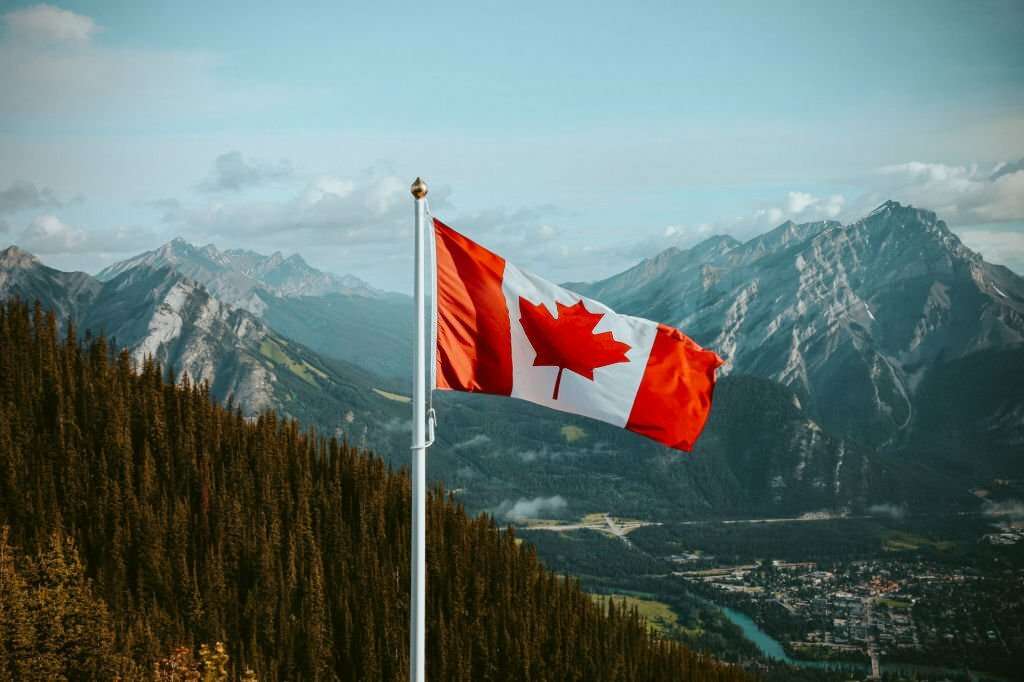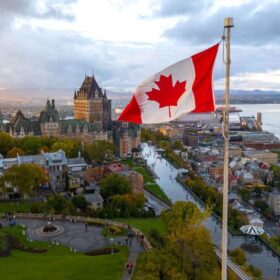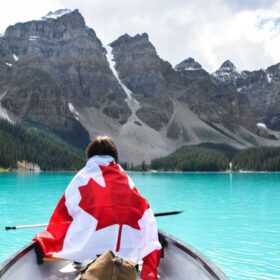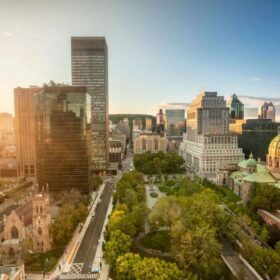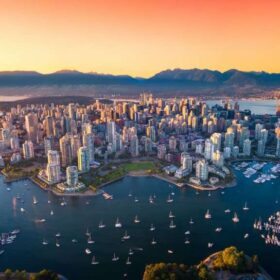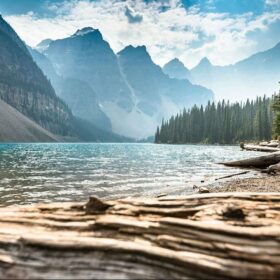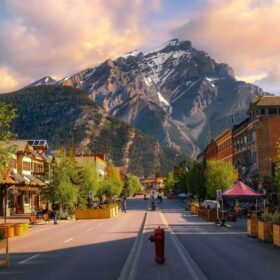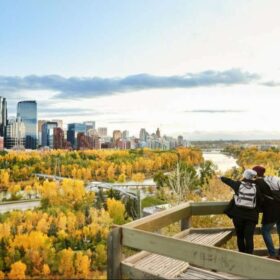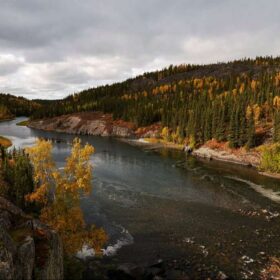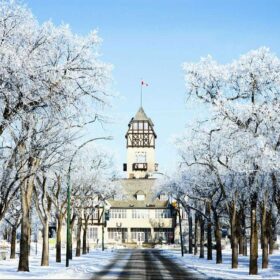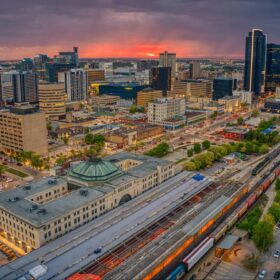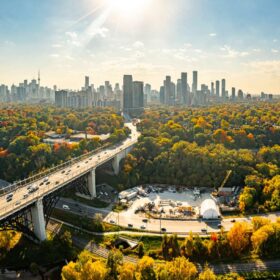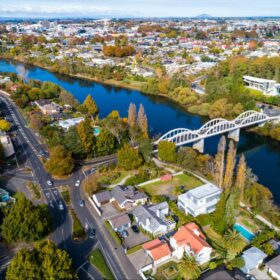This Commonwealth nation holds the distinction of being the world’s second-largest country. However, the majority of its vast land area is untamed wilderness, a significant allure of Canada. The extensive national parks offer breathtaking panoramas, providing ample opportunities for mountaineering, hiking, boating, swimming, and cycling.
Whether you seek the thrill of spotting grizzly bears in Banff National Park, skiing down the powdered slopes of Whistler, or savoring Vancouver’s freshest wild salmon, Canada caters to outdoor enthusiasts of all kinds. The country’s diverse attractions extend beyond its natural wonders, encompassing the cultural richness and historical depth of regions such as the Francophone area of Quebec, Vancouver’s blend of sparkling skyscrapers and East Asian influences, Toronto’s elegant Victorian architecture, and Ottawa’s grand railway hotels in the ‘château style’ and neo-gothic public buildings.
Embark on a journey to explore Canada’s stunning landscapes and vibrant culture, including the Great Lakes Region, with our guide to the best places to visit in this remarkable North American travel destination.
1. Vancouver
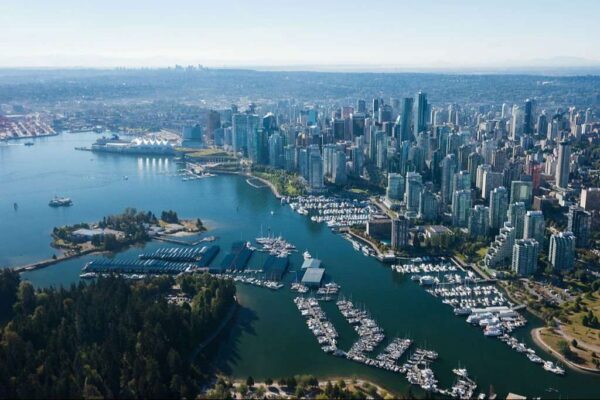
The expansive metropolis of Vancouver stands as one of Canada’s largest cities. Situated in the southwestern region of British Columbia, it has gained renown as a culinary haven, particularly for its delectable seafood, featuring celebrated catches like fresh prawns and wild salmon. The city’s diverse cultural blend ensures a wealth of culinary options, turning dining into a simple yet highly esteemed pleasure.
Stanley Park takes center stage as Vancouver’s premier attraction. Encompassing 1,000 acres of woodlands, gardens, and green expanses, the park boasts an aquarium, a water park, and the scenic Seawall. Other notable sites in Vancouver include the exceptional food market on Granville Island and the waterfront complex at Canada Place, housing the Vancouver Convention Center. Chinatown, with its vibrant array of shops, restaurants, and stunning gardens, ranks among the city’s most popular neighborhoods.
Dubbed the ‘Hollywood of the North’ due to its extensive TV and film industry, Vancouver also hosts the world’s fourth-largest cruise ship terminal. Annually, up to 900,000 passengers pass through the terminal, with many embarking on cruises bound for Alaska.
With both beaches and ski slopes easily accessible, Vancouver has earned recognition as one of the world’s best cities to live in. Inhabitants, featured by their active and contented lifestyles, engage in activities like rollerblading, jogging, and dog walking along the Seawall or playing volleyball on Kitsilano Beach. Before departing, seize the opportunity to take a plunge into Canada’s longest pool, nearly three times the size of a standard Olympic swimming pool!
Read More: Top Tourist Attractions in Vancouver
2. Banff National Park
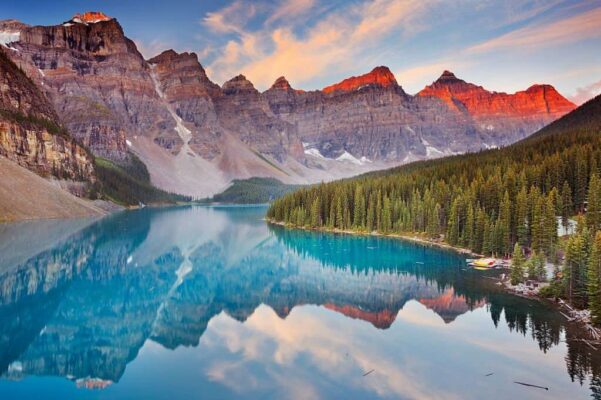
Nestled in the Canadian Rockies, Banff National Park stands as the oldest and one of the largest national parks in Canada. Its vast size and secluded location attract many seeking the allure of untouched wilderness, especially beyond the park’s two points of civilization—Banff and Lake Louise.
Two well-traveled routes wind through the park, each offering breathtaking scenery, from shimmering, multicolored lakes and dramatic canyons to scenic viewpoints and majestic waterfalls. Whether equipped with a personal vehicle or relying on park shuttles, visitors can easily access key attractions.
Enthusiasts of active pursuits will find themselves at home, with opportunities for snowshoeing or paddling on the lake, while wildlife enthusiasts embark on their own adventure. Banff National Park is teeming with diverse wildlife, with the highly anticipated grizzly bear sighting topping the list.
The town of Banff serves as the park’s primary settlement, providing a range of accommodations, shopping, and dining options. Accessed via the Icefields Parkway, Lake Louise offers luxurious lodging amid a picturesque landscape of turquoise lakes and towering mountains. Lake Minnewanka and Sunshine Meadows represent additional smaller communities within the park.
Read More: Top Tourist Attractions in Banff National Park
3. Niagara Falls
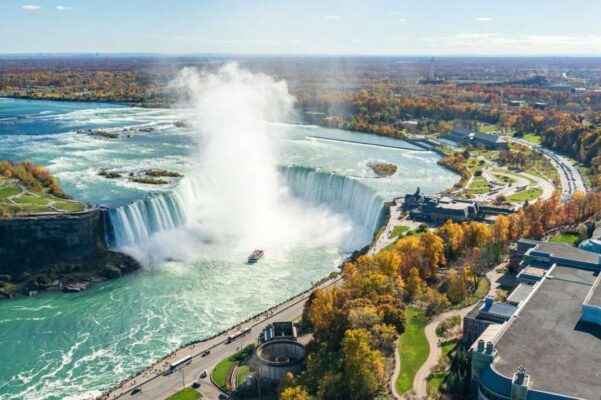
Niagara Falls comprises three breathtaking waterfalls located on the border of Ontario, Canada, and New York, United States. The Ontario side, known as Horseshoe Falls, offers the most stunning views and a plethora of attractions. The immediate vicinity surrounding the Falls is a top-tier tourist destination featuring observation towers, restaurants, souvenir shops, casinos, and high-rise hotels.
Its counterpart in New York is renowned as the ‘honeymoon capital of the world’ and is one of the few places where you can obtain a marriage license without a waiting period. Those seeking a blend of romance and adventure will discover a wealth of exciting activities.
For optimal views of Niagara Falls from the Ontario side, Queen Victoria Park is an excellent choice, offering illuminated Falls and nightly fireworks displays during the summer. Whether observed from above or below, visitors have various options, including helicopter tours, jet boat excursions, an observation deck near Skylon Tower, and elevators providing access behind the falls.
Read More: Top Tourist Attractions in Niagara Falls
4. Toronto
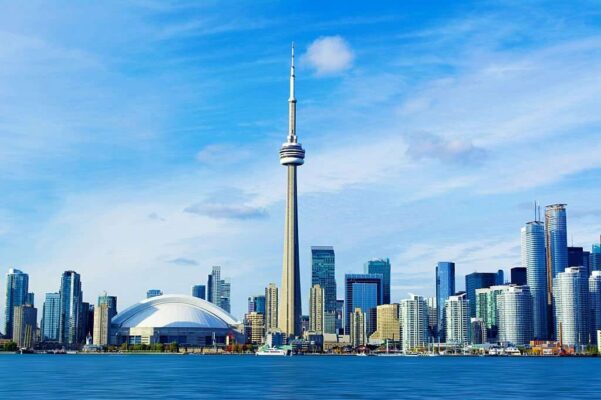
Toronto, the expansive metropolis, holds the title of the most densely populated city in Canada, with nearly three million residents. Nestled on the shores of Lake Ontario, Toronto is a key player in the Golden Horseshoe region, spanning from the lake to Niagara Falls.
Serving as the provincial capital of Ontario, Toronto stands out as one of the most multicultural cities globally, hosting nearly 100 ethnic communities. It’s a unique Canadian city where over half of the residents weren’t born in the country, creating a vibrant melting pot. Different languages adorn street signs, and diverse neighborhoods boast their own distinct cuisines.
Amidst the towering skyscrapers and a myriad of multicultural restaurants in the city center, there’s an abundance of cultural richness to explore.
A prominent stop on the tourist circuit is the CN Tower, formerly the world’s tallest free-standing structure (later surpassed by the Burj Khalifa in Dubai). The tower offers an unparalleled, uninterrupted view of the city from its observation deck, sky pod, and the 360 Restaurant. The experience of riding up in the glass-enclosed elevator alone is worth the visit!
Read More: Top Tourist Attractions in Toronto
Accommodation: Where to Stay in Toronto: Best Areas & Hotels
5. St. John’s
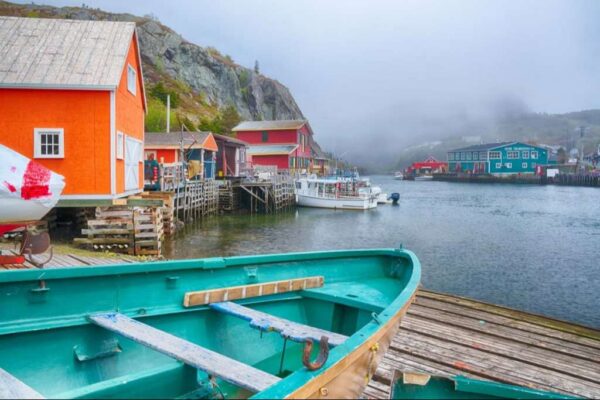
Nestled in Canada’s far eastern province of Newfoundland and Labrador, the welcoming city of St. John’s beckons. Serving as the primary gateway for air travelers to the island of Newfoundland, many visitors are drawn to the city itself.
Lining the sloping streets along the hills are colorful buildings, offering picturesque views of the harbor. St. John’s boasts a plethora of historic sites and attractions, including Signal Hill and George Street. However, the true allure lies in the vibrant atmosphere, the friendly locals, and the maritime culture that set this city apart from mainland Canada.
6. Victoria
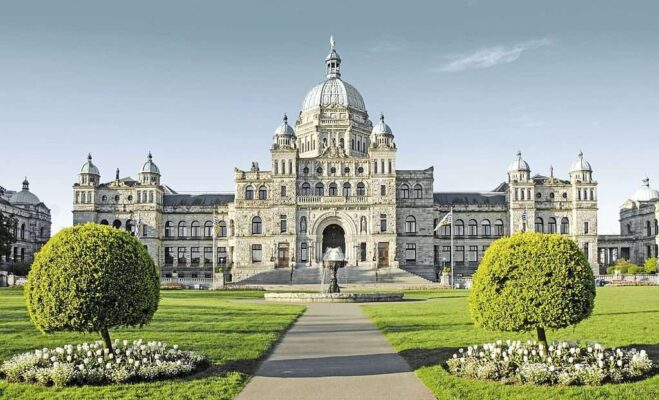
Situated on the southern tip of Vancouver Island, the charming capital city of British Columbia, Victoria, exudes a quaint small-town atmosphere, likely influenced by its island setting. Victoria enjoys a mild year-round climate, characterized by wet yet mild winters and warm, splendid summers. Renowned as one of the warmest places in Canada during winter, it attracts residents from colder regions of the country from late fall to spring.
Breathtaking views surround the city, whether gazing over the harbor, southward across the Strait of Juan de Fuca to Washington State, or towards the mountains on mainland British Columbia.
Tourist activities predominantly center around Victoria’s Inner Harbor, home to the Parliament Buildings and the historic Fairmont Empress Hotel. A leisurely stroll along the waterfront on a sunny day is a delightful experience. Just beyond the city center lie beaches, scenic coastal areas, parks, and hiking trails, adding to the allure of Victoria.
7. Montreal
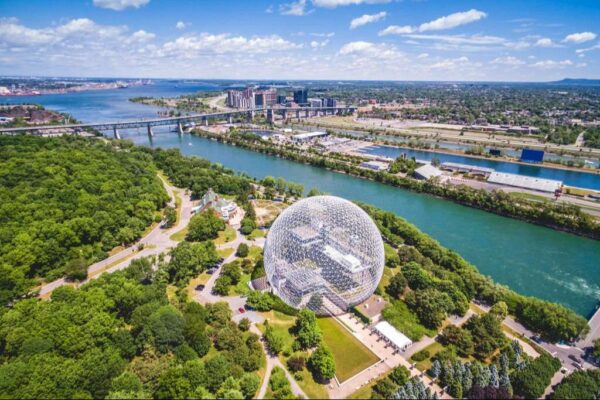
Situated at the confluence of the St. Lawrence and Ottawa Rivers, Montreal stands as the second-largest city in the Quebec province. Recognized as Canada’s cultural capital, Montreal is a vibrant, diverse, and progressive city in North America. Modern street art, an energetic music scene, and a lively nightlife contribute to its dynamic atmosphere, particularly in the newer areas.
While English is spoken, it takes a back seat to French, making Montreal the second-largest French-speaking city in the world after Paris outside of France. This linguistic richness has earned it the moniker “Paris of North America.”
Montreal’s skyline is a year-round delight, with autumn casting a particularly enchanting spell as the trees showcase hues of burnt orange against the iconic cityscape. Old Montreal steals the spotlight with its cobbled streets, charming museums, and historic buildings dating back to the 17th century. Ascending the clock tower in the Quai de l’Horloge offers unparalleled views of the St. Lawrence River and the city beyond.
Shopping enthusiasts can explore exciting districts like the downtown underground complex, Carrefour Laval mall, and the vibrant Bonsecours Market.
Read More: Top Tourist Attractions in Montreal
8. Halifax
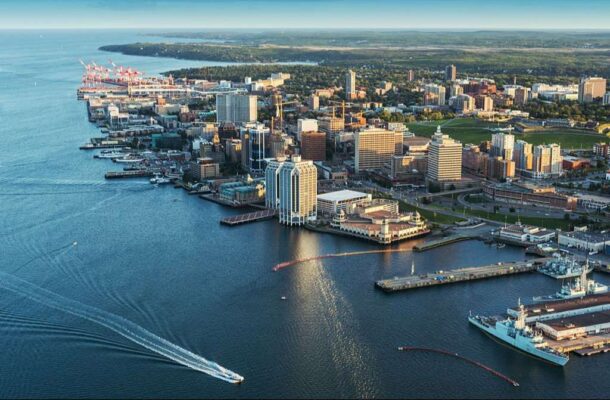
Halifax serves as an ideal starting point for those seeking an introduction to Canada’s Maritime Provinces. The heart of tourist activity in the city, especially during the summer, is the Halifax waterfront, adorned with a few historic buildings and a bustling atmosphere. Dominating the cityscape is the Halifax Citadel National Historic Site, a prominent attraction.
Venturing beyond the city leads to several quaint coastal villages that provide an authentic taste of Maritime life. Peggy’s Cove, home to the most photographed lighthouse in the Maritimes, stands out among these charming settlements. Further afield, Lunenburg and Mahone Bay offer additional attractions worth exploring. Embarking on a day trip from Halifax comes highly recommended.
9. Ottawa
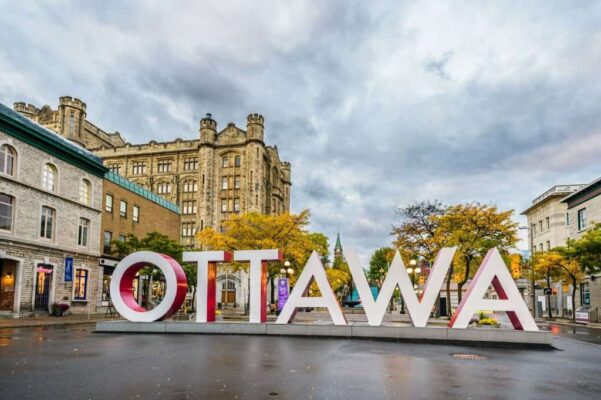
Situated at the confluence of three rivers, Ottawa holds the distinction of being Canada’s capital city, boasting the sixth-largest population in the country—a number that continues to grow. Remarkably, the city is bilingual, with residents often conversing in a blend of English and French, both of which are primary languages.
Formerly known as Bytown, Ottawa’s history is rooted in its past as a lumber town, with numerous mills lining the Ottawa River in the mid-19th century. Today, it has transformed into a verdant city adorned with serene parks and waterways. Biking gains popularity in the summer and these trails seamlessly transition into ski trails during winter. The iconic Rideau Canal, traversing the city center, is a must-visit, transforming into the world’s largest ice-skating rink in winter.
Exploring the Byward Market stands out as a primary activity, and for history enthusiasts, Ottawa offers a treasure trove of historic landmarks. While not officially designated as Canada’s cultural capital, Ottawa houses impressive structures like the National Library and Archives—the fourth-largest library globally.
Given its status as the nation’s capital, Ottawa hosts numerous federal establishments, including Parliament Hill, where the ceremonial Changing of the Guard unfolds daily during the summer.
Read More: Top Tourist Attractions in Ottawa
10. Churchill
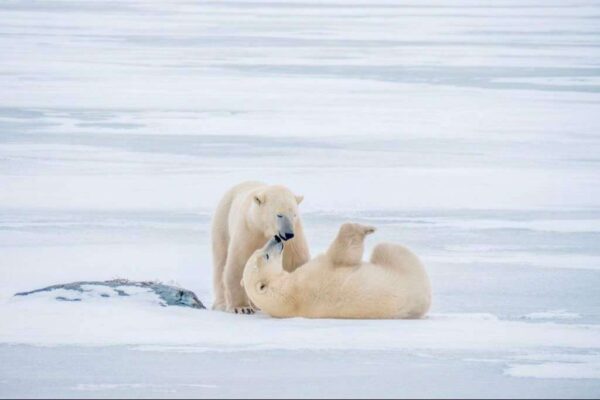
Despite its modest population of 1,000 residents, Churchill consistently attracts large crowds eager to witness its most renowned inhabitants—the polar bears. Recognized as the “Polar Bear Capital of the World,” Churchill is situated along the shores of Hudson Bay in the province of Manitoba. Beyond polar bears, the town is a prime destination for observing beluga whales, birds, and the mesmerizing aurora borealis.
The optimal period for polar bear sightings in Churchill is during October and November when the bears migrate to the shores in search of marine sustenance. The local tourism industry facilitates tours and employs specialized vehicles known as tundra buggies to ensure the safety of both visitors and the bears.
In the summer, tour operators take enthusiasts onto the water to encounter the multitude of beluga whales that migrate to the area. Some adventurous visitors even don swimsuits for the rare opportunity to swim with these magnificent creatures. Boasting over 270 bird species, Churchill stands as a haven for birdwatchers, drawing thousands of enthusiasts each summer to catch glimpses of species such as snowy owls, gyrfalcons, stilt sandpipers, and tundra swans.
Churchill also offers an ideal vantage point for witnessing the aurora borealis, or northern lights, with the peak viewing time typically occurring between January and March. The primary means of reaching Churchill are by airplane and train, with train connections available from Winnipeg and Thompson.
11. Whistler
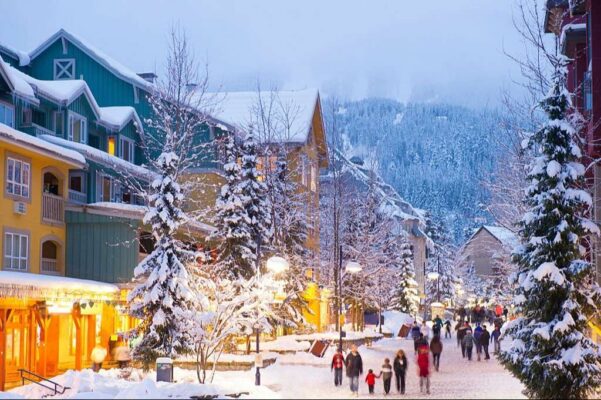
Due to the presence of two stunning mountains, Whistler and Blackcomb, the Whistler resort stands as the preeminent and largest alpine ski destination in North America. Nestled in the Coast Mountains of British Columbia in western Canada, Whistler is conveniently accessible via a two-hour journey from Vancouver along the Sea-to-Sky Highway, renowned for its scenic beauty.
Situated at the base of Whistler and Blackcomb are three charming villages: Whistler Village, Creekside, and Upper Village. Transporting visitors from the villages to the mountains is the Peak 2 Peak gondola.
Whistler’s origins trace back to its humble beginnings as a logging town. Originally developed as a potential venue for the 1968 Winter Olympics after the 1960 Olympics in Squaw Valley, the ski resort was established on London Mountain. However, it was not until the 2010 Winter Olympics that Whistler hosted the prestigious event. To shed its misleading name, London Mountain underwent a renaming to Whistler Mountain, inspired by the whistle-like sound produced by the native hoary marmots inhabiting the region.
Presently, Whistler boasts several world-class ski resorts, captivating adventurers with extraordinary views from its mountain slopes, enticing them to return year after year. Beyond snow sports, the mountains also offer excellent opportunities for hiking and rock climbing.
12. Cape Breton Island
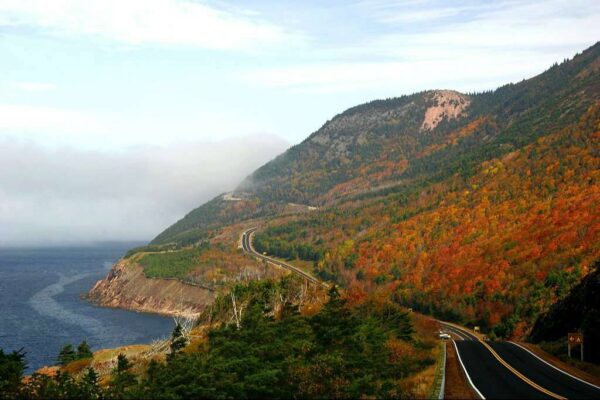
Situated in northeastern Nova Scotia, Cape Breton Island, despite being its own independent colony until 1820, now forms an integral part of the region. In the early 19th century, the island welcomed a significant influx of Scottish expatriates, making it the sole location in North America where Gaelic is spoken, offering traditional Scottish music concerts as part of its cultural heritage.
Beyond its Scottish roots, Cape Breton boasts a vibrant French population, notably highlighted by the 18th-century Fortress of Louisbourg. The presence of a captivating Mi’kmaq community further enriches the diverse cultural tapestry.
Whale watching in this region is an unforgettable experience, especially at the northern tip of the island, where sightings are nearly guaranteed. Accessible through boat or kayak tours, the journey is justified by the breathtaking scenery alone.
Amidst its breathtaking landscapes, Cape Breton Highlands National Park takes center stage, featuring the spectacular Cabot Trail and stunning lookout points. Additionally, picturesque fishing villages like Bay St. Lawrence offer delightful seafood experiences, adding to the island’s charm.
13. Québec City
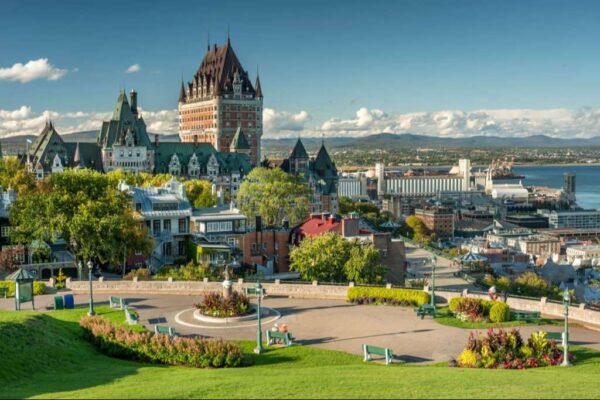
As the capital of the Quebec province in eastern Canada, Quebec City exudes the charm of a European village, evident in its French heritage, architecture, and language.
Situated atop a hill with a commanding view of the St. Lawrence River, Vieux Quebec, the city’s historic district, stands as the only North American city still preserving its original walls. A stroll along the cobblestone streets of the Old City leads to encounters with historic landmarks such as the Citadel and the Place-Royale, where Samuel de Champlain established the first North American French settlement. Throughout the Old City, cafes, shops, and bars add to the vibrant atmosphere.
The city’s iconic Chateau Frontenac, considered the most photographed hotel in North America, welcomes visitors for tours, even without an overnight stay. Another noteworthy establishment is the Ice Hotel, operational from January to April, featuring rooms adorned with exquisite ice sculptures.
Beyond the city center, several beautiful and historic parks, including Montgomery Falls and Plains of Abraham, showcase breathtaking waterfalls, outdoor recreation opportunities, and a glimpse into the area’s history.
Read More: Top Tourist Attractions in Quebec
14. Whitehorse
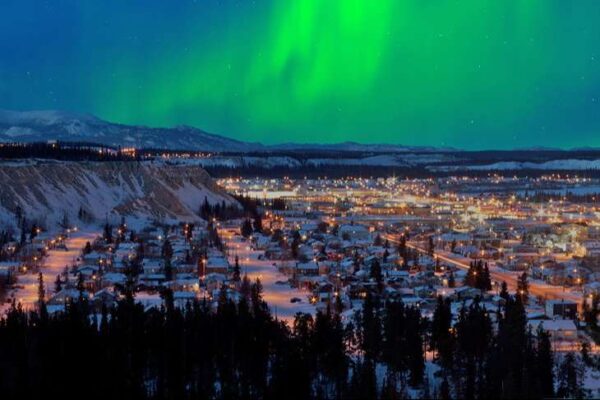
Exploring Whitehorse provides a glimpse into life in Canada’s far north, as this city serves as the capital of the Yukon and a gateway to northern regions, including Alaska and the stunning Nahanni National Park.
Rooted in history, Whitehorse’s origins trace back to the Klondike gold rush when prospectors passed through on their journey to Dawson City. Many of the city’s attractions offer a window into the days of the gold rush, and the surrounding natural areas beckon exploration. With luck, visitors may witness the night sky coming alive with the mesmerizing display of the northern lights.
15. Tofino
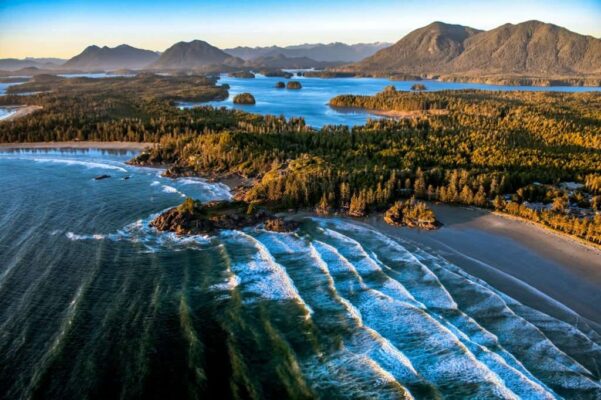
Tofino, located on Vancouver Island, holds the unofficial title of Canada’s surfing capital and stands out as one of the country’s most distinctive destinations, attracting a diverse array of visitors.
Visitors flock to Tofino for its surfing scene, hikes through ancient forests, and the expansive beaches within Pacific Rim National Park. The area also offers opportunities for wildlife observation, kayaking, storm watching in November, and unwinding at luxurious resorts or serene campgrounds nestled beneath towering trees.
Although the town itself is small, it exudes an end-of-the-world charm. Fine dining options are available at lodges and select restaurants scattered around the town, while unique stores, galleries, and coffee shops contribute to the town’s distinctive character.
Despite its modest size, the region feels expansive, providing plenty to explore and experience. A stay of at least a few days is recommended, and it’s easy to fill up a week or more with the abundance of activities. Just a short distance away lies Ucluelet, another quaint town easily accessible on a day trip from Tofino.
FAQs
Q: What is the best time to visit Canada?
A: The best time to visit Canada depends on your preferences. Summer offers pleasant weather for outdoor activities, while winter is ideal for skiing and winter sports.
Q: Are there any visa requirements for visiting Canada?
A: Yes, most visitors to Canada require a visa. Check with the Canadian government for specific visa requirements based on your nationality.
Q: What are some must-try Canadian dishes?
A: Don’t miss out on trying poutine in Quebec, fresh seafood in Nova Scotia, and maple syrup in Ontario.
Q: Is it safe to travel to Canada?
A: Canada is generally considered a safe destination. However, like any travel, it’s essential to stay vigilant and follow common safety practices.
Q: What are the top outdoor activities in Canada?
A: Canada offers a range of outdoor activities, including skiing in Whistler, hiking in Banff, and kayaking in the Thousand Islands.


